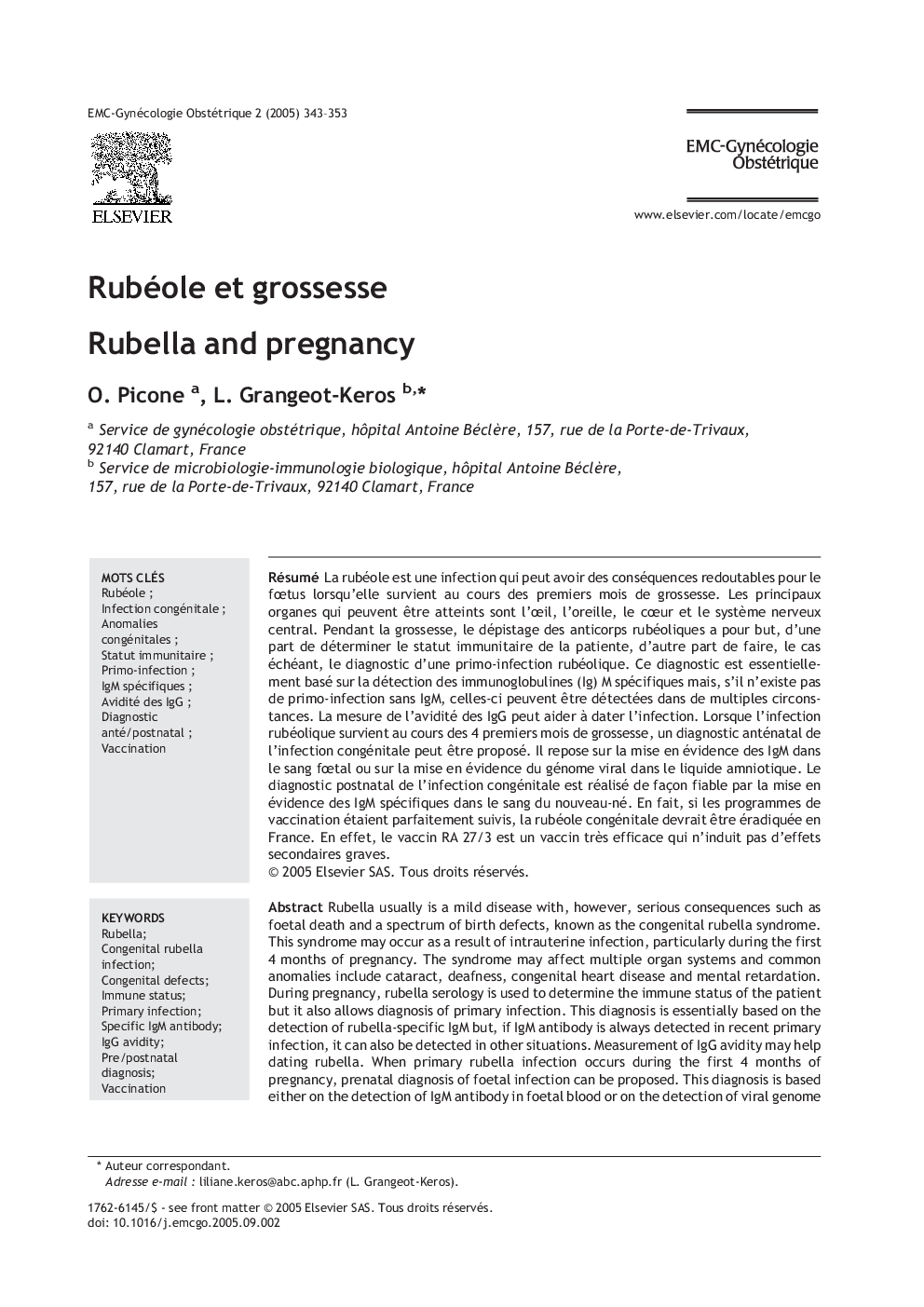| Article ID | Journal | Published Year | Pages | File Type |
|---|---|---|---|---|
| 9319161 | EMC - Gynécologie-Obstétrique | 2005 | 11 Pages |
Abstract
Rubella usually is a mild disease with, however, serious consequences such as foetal death and a spectrum of birth defects, known as the congenital rubella syndrome. This syndrome may occur as a result of intrauterine infection, particularly during the first 4 months of pregnancy. The syndrome may affect multiple organ systems and common anomalies include cataract, deafness, congenital heart disease and mental retardation. During pregnancy, rubella serology is used to determine the immune status of the patient but it also allows diagnosis of primary infection. This diagnosis is essentially based on the detection of rubella-specific IgM but, if IgM antibody is always detected in recent primary infection, it can also be detected in other situations. Measurement of IgG avidity may help dating rubella. When primary rubella infection occurs during the first 4 months of pregnancy, prenatal diagnosis of foetal infection can be proposed. This diagnosis is based either on the detection of IgM antibody in foetal blood or on the detection of viral genome in amniotic fluid. Post-natal diagnosis of congenital infection is reliably performed by detecting specific-IgM antibody. In fact, if immunization programmes were thoroughly applied, congenital rubella should be eradicated in France since the RA 27/3 vaccine is very efficient and safe.
Keywords
Related Topics
Health Sciences
Medicine and Dentistry
Obstetrics, Gynecology and Women's Health
Authors
O. Picone, L. Grangeot-Keros,
